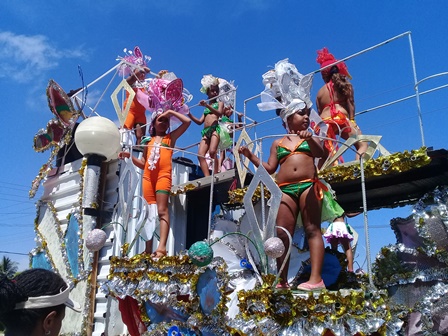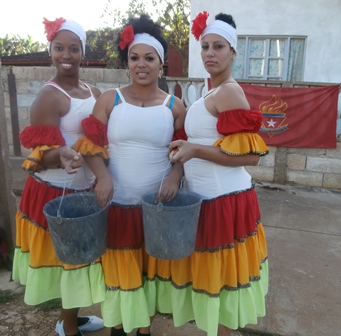Legends and Traditions

Without any doubt in Sola for your characteristics of small town and where the cultural options of intellectual discussion are minimal The hot corner became a recreation ground where the theme of the sport was the preferred, but not the only one.
In the years 1987 and 1988 The hot corner gets to have its gold moment for various reasons: The leafy pines located in front of the ancient butcher's shop, than years ago outside place of television and cinematographic recreation, afforded a delicious and ready shade to establish the impassioned arguments, (the shoemaker) Maecelo Meléndrez (known for the nombrete of Mingo), Who in its daily task at the place entertained it with jokes that go from the Galician roots to the most native sources, without circumventing the offers of several foodstuffs and liquids like Cubanitos and sugar cane liquors that next to the service of strong food of the snack bar The palm trees propitiated in that place the conditions desired for the debates, That at times they were through by unimportant things and the local cotidianidad, but without stopping to face the world.
In Sierra of Cubitas there is an intense cultural tradition of Haitian spring, the one that manifests itself principally through music and the folk dances that have gotten as far as our days, he tries of this are the folkloric groups Caidije and Dance Nuveau.
The known Danza Caidije created for himself in the year 1926 in the batey of the same name. Ever since it has kept himself in the Easter tradition strong where several different bateyes's peasants meet as The Lima, The Hope, Senado, Mines, The twenty four, are The Grabiela, The Tomb, and for supposed Caidije. According to testimony of Antonia Vacil (Haitianos's descendant), “ they were going of batey in batey, singing, dancing and stirring flags. Your folk music booms through the roads, this accomplished it principally in Holy Week.
These traditions have provoked cultural interchanges with countries like Belgium. Dance Noveau, the daughter of the association would dance Caidige, holds the same style, rhythm and traditional dances than your predecessor. This association of recent formation has come out in different stages of our municipality, as in the surroundings, being once her music was accepted and folk dances for the foreign visitors from Mexico, Canada, Costa Rica, United States and Cuba among others.
Between your dances the Gagá and Budú take part: Dance traditional that takes effect in all the Weeks Saint and in celebrations of the resurrection of Christ. I tamed: It comes true as a representative of the saint-like elders: Eleguá, owner of Ogún: He is the owner of the mountain and it means war. Machete: Constitute the party to the Gagá's Tradition, dancing this instrument that tears apart the mountains with can be, indistinctly, bellicose in its dance of work.
Between the musical traditions of the municipality we have the Conga and the Retinue, being this last the most ancient. The Conga Cubiteña and their retinue show up in the Working Days of Culture principally between other municipal and provincial events. Since the decade of the forty, specifically in 1942 retinues, in their beginnings get organized in our town they did not make themselves accompanied in their for the conga, but for musical groups of the patio or foreigners, and sometime for some neighbor that touches some instrument than the acompañara.Su origin was peasant, as well as its dances, they got organized in the towns of Glory and Sola, being guided by Nila Guanchi to 1958, they had different names I eat: White Cuban peasants, Guaracheros, The Damicelas, Valiants, among others. In 1958 the peasant dance merges with the dances and Afro-Cuban music where for the first time they start to accompany themselves with the conga.
The Conga in Cubitas had her light in the years 1957 and 1958, asientado in a group of descendants of Haitianos those who live together in the Batey of Saimí, they organize it with shortening and cowhides barrels, frying pans domestic and tumbadoras manufactured of pieces of wood of Cedro, do their first presentation in public in the town of Saimí, extending himself at a later time to Imías's batey. To the following year they visit Sola's town where he merges with the retinue. Union of the conga is and the retinue was directed by the Niña Soria and like choreographer Trino Soria. Being (Giants) sponsored by Andrés Pousa. After 1959, all these cultural public demonstrations were benefited by the revolutionary process. To our days, they have passed through several directions, at the present time from 2003 it is guided by the Promotor Cultural Roberto Pedroso Soria and Nancy Richardson.
In the year 2000, the poet Carlos Rivero Echemendía, publishes their 1er I have the day off named Erotemas, patronized for the publishing house, of which are evident 300 issues.





- You should not use obscene or offensive words.
- Comments should be related to the topic.
- Comments that violate previous policies will not be posted.